The Age has run a disturbing report on the collapse of TAFE enrollments, driven in part by the uncapping of university places and the bubble in dodgy private Vocational Education and Training (VET) providers:
…[Tafe] enrolments [are] down by up to 40 per cent at some providers, two years after [Victorian] Premier Daniel Andrews promised to “rebuild” TAFE…
Some TAFE buildings resemble ghost campuses, rather than thriving centres of learning…
According to the Education Union, 3300 teachers have left the Victorian TAFE system in the past five years.
…annual reports also reveal that in the past year alone, enrolments have plummeted: Sunraysia Institute had a 21 per cent drop, student numbers were down 12 per cent at GOTAFE, and Melbourne Polytechnic experienced a staggering 40 per cent drop in enrolments…
Bruce Mackenzie, who led the state government’s review into the training sector… says private training college scandals have unfairly tarnished TAFE’s reputation, while a decline in apprenticeships and the uncapping of university places has also driven students away.
“The second tier universities take anyone into their course whether they are suitable or not, which rips the heart out of TAFE institutes,” he says…
But that mess, according to the AEU, started when the Brumby government created an open market system in 2008, paving the way for an explosion in private providers and rorting.
“The contestable policy will always undermine the TAFE system,” says Mr Barclay…
The collapse in TAFE numbers is worrying on several levels.
Recent data released by the National Centre for Vocational Education Research (NCVER) revealed that traineeship and apprenticeship commencements have fallen by more than 45% over the past four years:
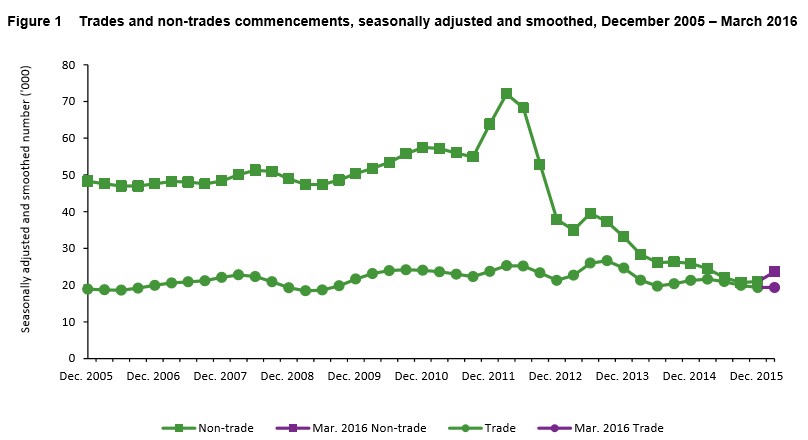
Apprenticeship completions have also fallen heavily, down by 24.0% in the 12 months to March 2016.
Meanwhile, the Department of Employment’s most recent skills shortages report showed that “skills shortages”, while low overall, are far more widespread for technicians and tradespeople:
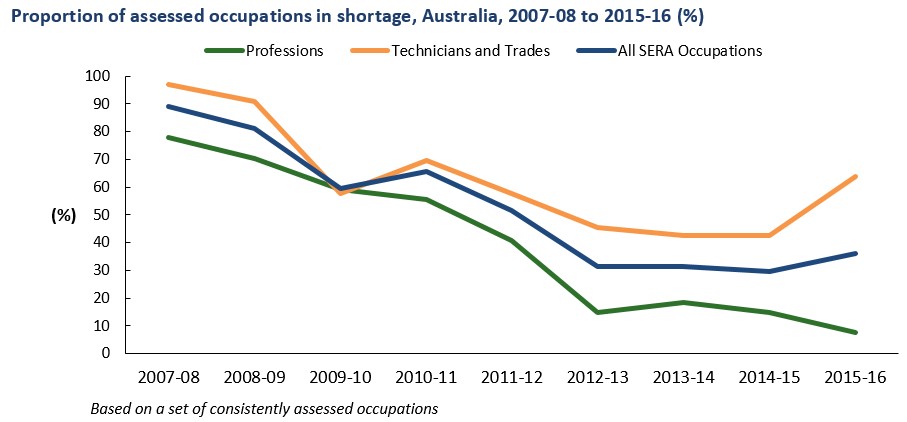
Because they are experiencing relatively few commencements and completions of apprenticeships:
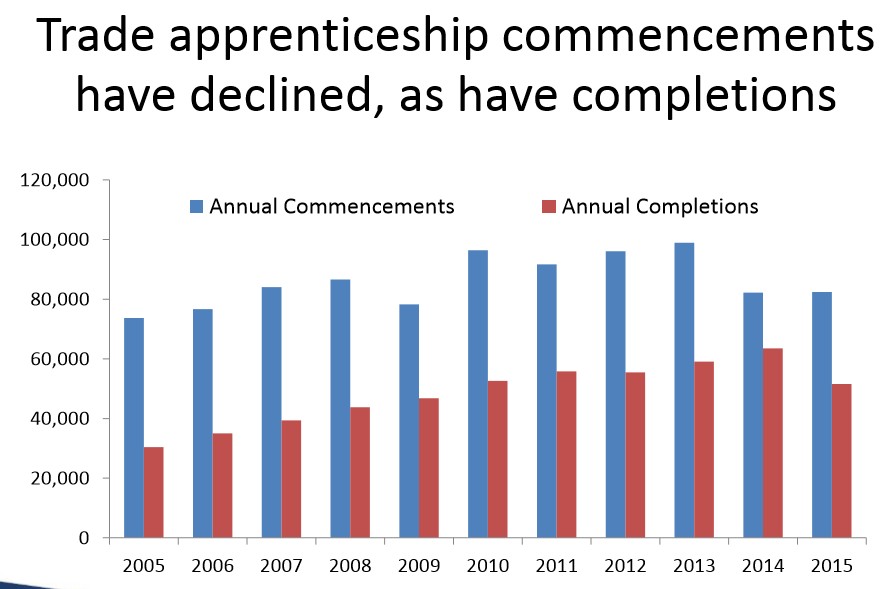
By contrast, the economy is awash with university students, with nearly 730,000 enrolled in a bachelor degree:
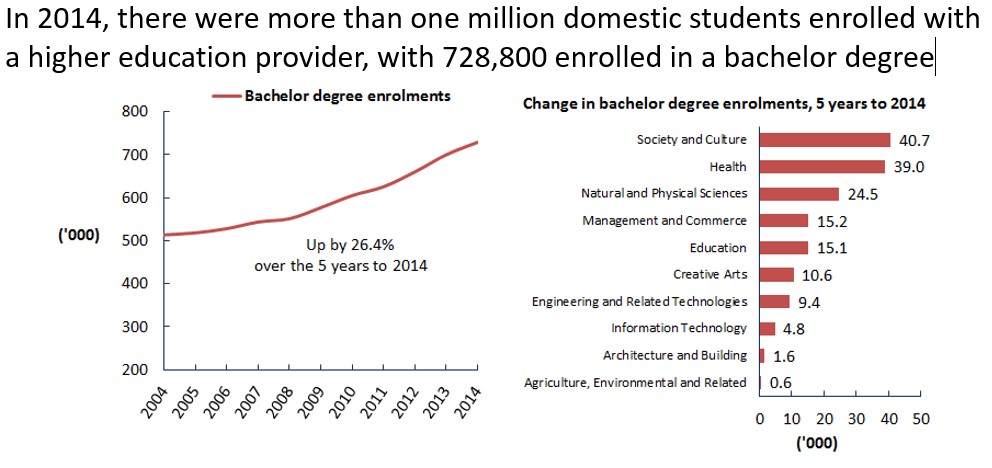
Despite graduate employment outcomes falling to “historically low levels”:
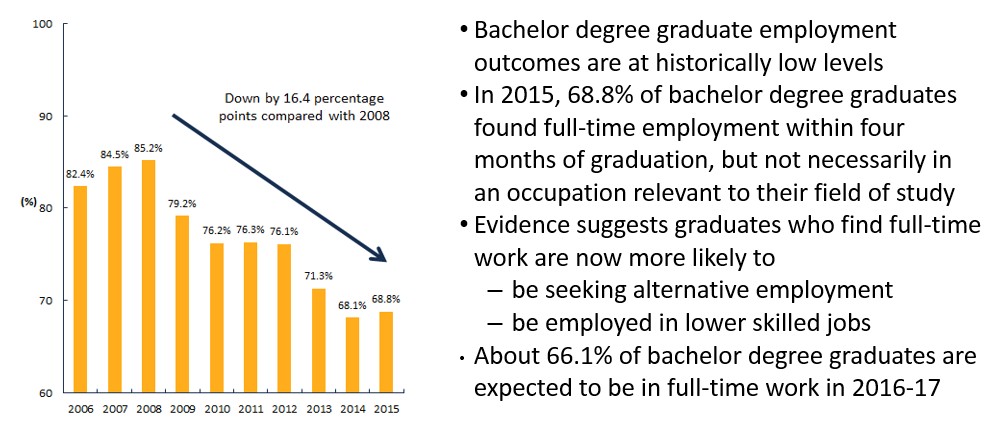
Students numbers studying at private VET colleges also soared, guzzling-up public funds via VET FEE-HELP loans and diverting students away from public TAFEs.
The below graphics, which come from the 2015 VET FEE-HELP Statistical Report, tell the story.
As shown below, nearly three-quarters of VET students were enrolled in private colleges in 2015:
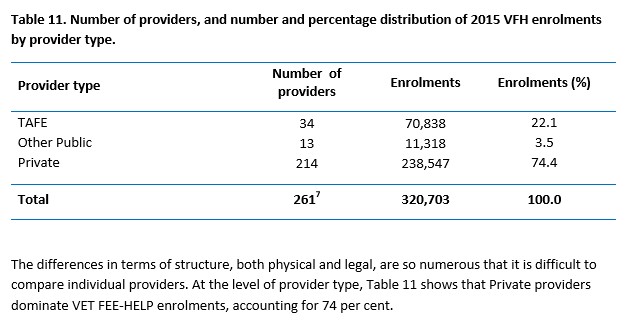
And these private colleges charged an average loan amount well above that of public TAFEs:
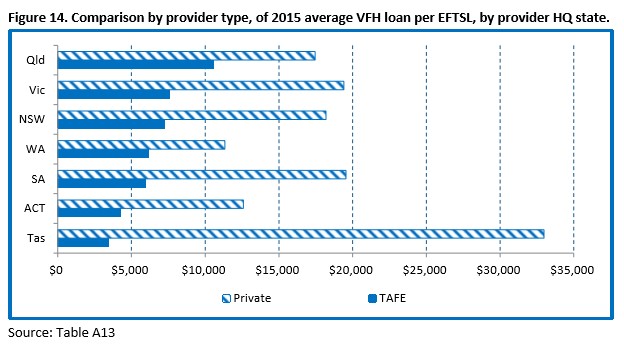
They also charged average tuition fees of $18,290 versus $7,642 for public TAFEs, as well as accumulated total VET FEE-HELP loans of $2,400 million in 2015, versus just $402 million for public TAFEs:

However, despite the huge imbalance between student numbers, fees charged, and funding, only 14,400 students managed to complete courses at private colleges in 2014, compared with 18,400 students at TAFE and other public providers.
Clearly, Australia’s higher education system is a complete mess. The implementation of demand-driven training systems across Australia has effectively led to an explosion of students studying at university – creating a glut of bachelor-qualified people – as well as students studying expensive diplomas at dodgy private providers. At the same time, a commensurate shortage in people with trade skills has developed, due in part to the decline in TAFE.
What has been delivered is a wasteful, rorted higher education system that has delivered a huge Budget blow-out, poor educational outcomes, and the wrong skills for the nation.

